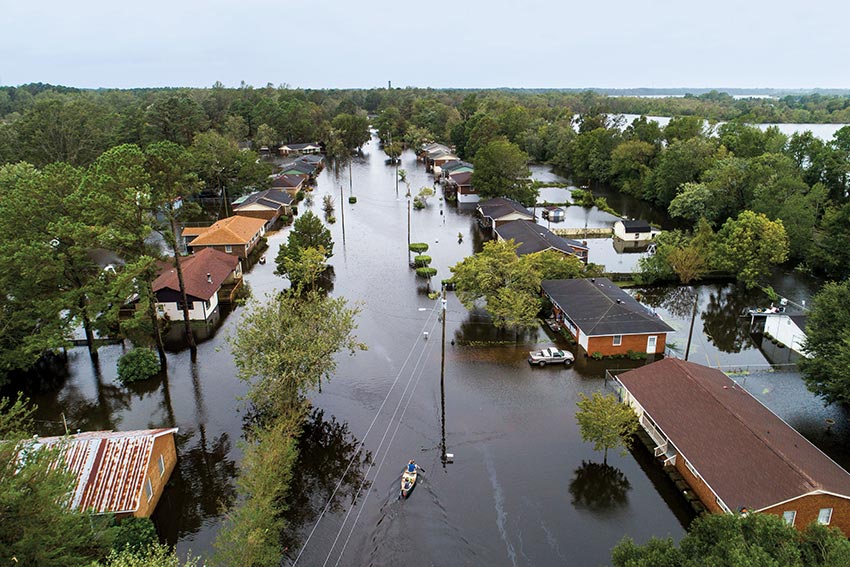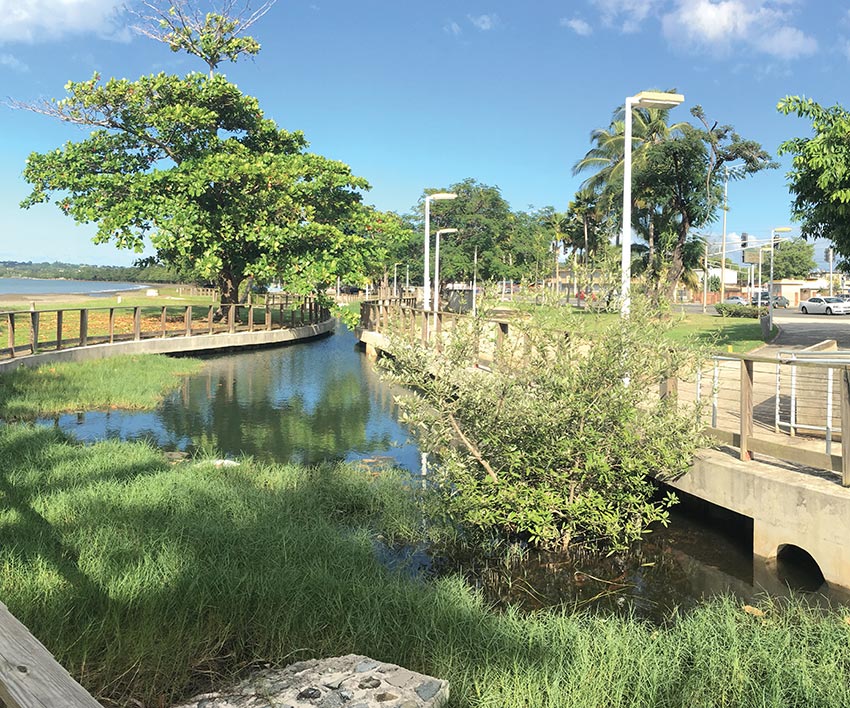Coastal Resilience
Learning Objectives:
- Explain the interaction of storm-related coastline flooding and stormwater overflows originating inland.
- Describe the changing nature of severe weather as climate-change effects intensify.
- Define the terms “hard path” and “soft path” and explain when each type of flood protection is appropriate.
- Describe the application of natural-system techniques to adapt shorelines and inland streams to changing conditions and reduce flood impacts.
Credits:
This course is approved as a Structured Course
This course can be self-reported to the AANB, as per their CE Guidelines
Approved for structured learning
Approved for Core Learning
This course can be self-reported to the NLAA
Course may qualify for Learning Hours with NWTAA
Course eligible for OAA Learning Hours
This course is approved as a core course
This course can be self-reported for Learning Units to the Architectural Institute of British Columbia

DOUBLE WHAMMY During last September’s Hurricane Florence, the small North Carolina city of New Bern was inundated by the compound effects of storm surge and river flooding.
View course on architecturalrecord.com »
Last November, New Bern, North Carolina, could not have looked more peaceful. Along a waterfront park, calm waters lapped the shoreline barely 3 feet below sidewalk level. The compact redbrick 18th-century town looked to be an island, surrounded by long stretches of unruffled water to the east and south. The city of 30,000 people is actually located at the confluence of two rivers, the Neuse and the much smaller Trent, but the combined streams broaden as they flow into Pamlico Sound just seven miles away on the Atlantic coast.
On closer look, however, the destruction wrought by Hurricane Florence, two months earlier, was still evident. Porches on riverfront houses had been wrenched askew by flood-waters. Brick foundation walls had been swept away. A massive tree had crushed a small cottage.
Florence inundated New Bern beginning on September 13. First it was the storm surge, driven by the hurricane from the coast inland, where it collided with the rain-swollen rivers. As time passed, the rivers continued to rise, carrying the runoff from heavy rain that had been falling for days as far away as Raleigh-Durham, 100 miles northeast. New Bern was cut off for weeks and suffered $100 million worth of damage. The City Manager’s Office counted up 235 businesses and 1,761 houses that were affected.

SPONGE PARK In Mayagüez, Puerto Rico, Local Office Landscape and Urban Design and architect Javier Bonnin Orozco created a beachfront park that includes wetlands capable of storing storm-surge waters.
With hurricanes a regular event along the coast of the Carolinas, catastrophic flooding is a known risk. But the intensity and level of damage from Florence was unprecedented, signaling one more way that the climate crisis is exacerbating and complicating the problem of protecting communities from storm-driven floods, as well as from more frequent tidal flooding caused by rising seas.















